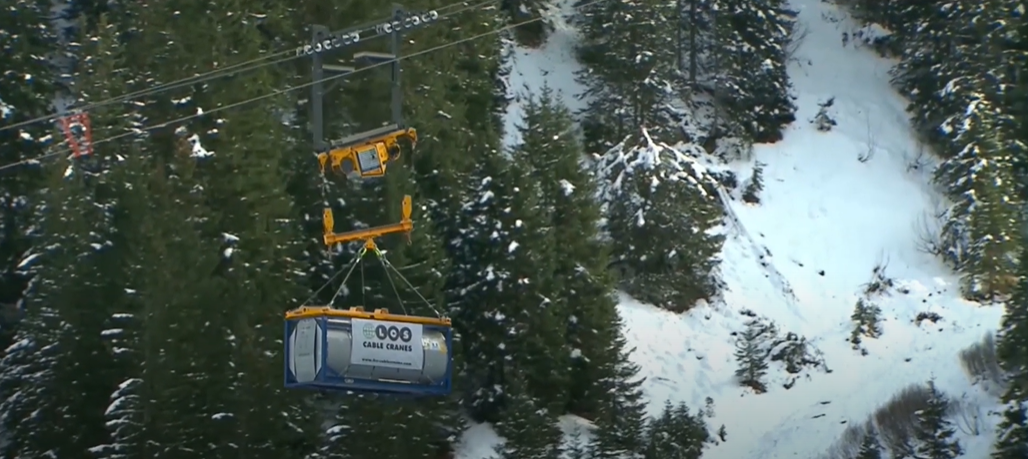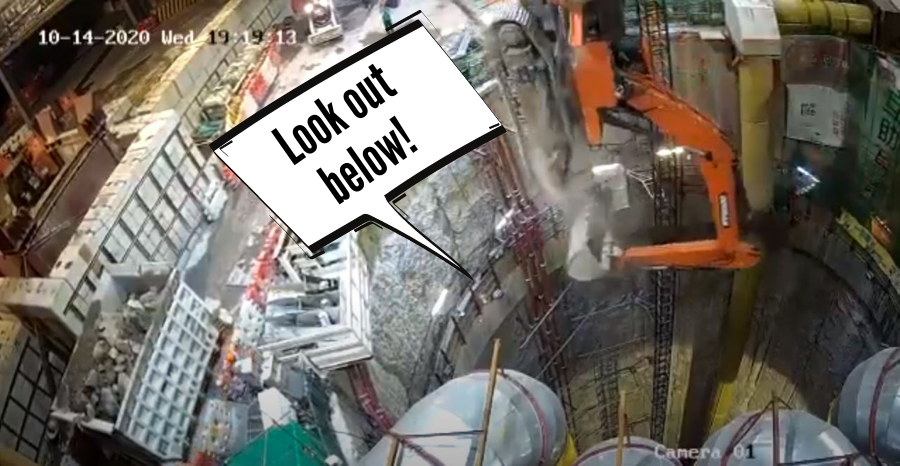One of the challenges with construction is determining how your work can and will affect the existing conditions surrounding your job site. That’s why it’s increasingly important to not only perform proper due diligence procedures, but also react to the findings. That, unfortunately, doesn’t always happen and could potentially be what caused a massive sinkhole in Fukuoka, Japan, last week.
Around 5:15am local time, a 98 foot (30m) by 88 foot (27m) section of roadway was completely swallowed by a sinkhole. As crews were working on an underground subway line directly beneath the road, groundwater began to flow into the tunnel, according to the Asahi Shimbun. Shortly after, the road above began to collapse, exposing a flowing sewer line under the pavement. Luckily, no injuries were reported, but hundreds of residents and businesses were without power or gas, as the nearby utilities were compromised. Due to fear of the sinkhole growing, city officials ordered the hole to be filled in later that afternoon.
Perhaps even more astonishing, repairs have been made to all the utilities and the pavement in a week’s time, as the road was opened back up to the public on November 15th. After the hole was filled in, it only took crews 48 hours to repair the utilities and re-pave the roads, according to CNN. The 50 foot (15m) deep hole took roughly 8,100 cubic yards (6,200 cubic meters) of a sand and cement mixture, which the mayor of Fukuoka says is now 30 times stronger than before, reported the Guardian.
The video below was uploaded to Youtube by ODN:
Remote jobsites with difficult terrain pose some substantial logistical challenges when it comes to getting equipment and materials on site. I’ve seen several different methods used in the past, such as heavy equipment carrying blimps, cargo planes, helicopters, and the Fat Truck, but I recently came across a new method: a cable car.
In November of last year, the 546 foot tall Mina Plaza in Abu Dhabi officially broke the world record for tallest demolition by explosion, supplanting Hudson Department Store in Detroit, Michigan, which held the record for 22 years.
If you need to get some heavy mechanical equipment on the roof of your project, you could use a boring old crane – or you could gas up the bird and make that equipment take literal flight. Alright, so cranes aren’t actually boring, but some times a helicopter makes more logistical sense, either because it reduces total lift time or, in some cases, makes economical sense. Either way, there are some important safety precautions to take in case something goes wrong.
2020 was a stressful year, so let’s decompress a little bit by reviewing some of the most fun demolition videos from the past year. A demolition that broke a 22 year old record highlights the bunch and I also stretch what the definition of “demolition” is a little bit, because I think the video is so cool. Don’t @ me.
Without further ado, here are the top 7 demolition videos from 2020:
2 years ago, crane manufacturer, Sarens, unveiled what is considered to be the world’s largest crane, by both size and lifting capacity. Big Carl, as the huge crane was nicknamed, began work a few months later on the Hinkley Point C nuclear power station in England. Now, the jobsite boasts an abundance of crane activity, a true site to behold, and it was captured on aerial footage for you to enjoy.
Back in 1998, the Hudson Department Store in downtown Detroit, Michigan was demolished by explosives. That building stood 410 feet tall across its 29 floors, making it, at the time, the tallest building to ever be taken down by implosion. The dust cloud covered many city blocks and the 20,000 unsuspecting people that came to watch the event. That record was just recently broken by a building over 100 feet taller than it.
Excavators aren’t typically meant to be dropped down to a lower level, but certain circumstances require it sometimes. The machines are obviously extremely heavy, so a large crane and proper rigging is required for it to happen safely. As a construction firm in Hong Kong, China recently found out, though, it’s a little tougher than it seems.
Usually, when a new development is going to go into a spot where a building already exists, that existing building gets blown into smithereens and its remaining rubble hauled away. BUT, there is apparently a different way to handle the situation now, which is by politely asking the building to walk away and to find a new home – well, kind of.
CAT is no stranger to finding extremely creative and expensive ways to show off their construction equipment. In years past, they’ve created a giant Jenga game with 600 pound blocks and the world’s first moving golf course on the backs of their dump trucks. Now, they’re showing off some of their new technology with the release of the biggest PAC-MAN game you’ve ever seen.











On Tuesday morning, February 23, the Syracuse Fire Department responded to a call about a collapsed crane on a construction site near the university. Thankfully, no injuries were reported.